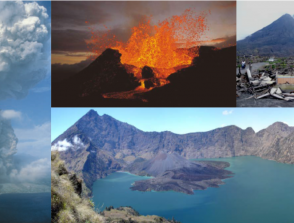The contribution of microgravity studies to the understanding of how volcanoes work.
09/02/2011
IPGP - Îlot Cuvier
11:00
Séminaires Systèmes Volcaniques
Salle 310
Daniele Carbone
INGV, Catane, Italie
Microgravity studies represent a relatively new technique to investigate active volcanoes, with respect to some of the more established methods (e.g. seismic and ground deformation studies). Temporal changes of the gravity field in volcanic zones are related to sub-surface mass redistributions, in response to magmatic processes, and are variable in space (wavelengths between hundreds of meters and tens of kilometers) and time (periods between seconds and years), according to the size, depth and rate of evolution of the source processes. Accordingly, both time-lapse and continuous observations are accomplished. Through time-lapse measurements, a good space resolution can be attained (if closely spaced measurements are accomplished), while the time resolution is limited by the repetition time of the surveys (usually monthly to yearly). Through continuous measurements, a good time resolution can be reached, but the space resolution is poor, due to the limited number of instruments usually available at a single area. By supplying information on the amount of mass redistributed, gravity studies permit to alleviate the ambiguity on the source nature, which may affect the results of ground deformation measurements. Furthermore, gravity studies can evidence magma intrusions into pre-existing void spaces, which do not produce any other effect measurable at the surface, and can expose zones of increasing microfracturing rate, within or below a volcanic edifice, able to channel magma from a deep storage to the surface. Continuous measurements of the gravity field allow to discover fast changes in the magma/gas ratio within the upper plumbing system of a volcano and can thus be used to discover “hidden” states of unrest at active volcanoes. Cases of studies, mainly from Etna, but also from Stromboli and Kilauea will be presented. (1 événement)




